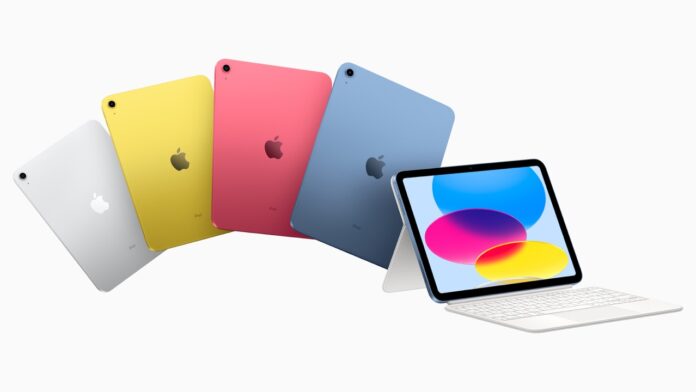Apple’s 10th Generation iPad sports USB-C, leaving Lightning behind after a decade
Apple on Tuesday took the wraps off two new iPad products, one aimed at professionals and the other aimed at the rest of us. Apple refreshed its iPad Pro and regular iPad line, and while many changes abound with these refreshes, one break from the past sticks out as a coincidence of timing if nothing else: The new 10th generation iPad sports USB-C in place of Apple’s long-lingering Lightning interface.
The interface appears on the iPad only weeks after the European Union (EU) Parliament passed a law mandating USB-C as the official charging interface for mobile devices sold there. This is coincidence, not likely the result of the EU law because Lightning has been on the way out from Apple’s iPad line for some time.
In fact, Apple excised Lightning from the iPad Pro in 2018, replacing it with USB-C. Other iPads in the lineup — the iPad Air and the iPad mini — have also received USB-C interfaces in various refreshes over the years, making the 9th generation iPad the sole holdout for the Lightning port, an Apple standard that’s been around for about a decade. Apple’s first three generations of iPad sported the even older 30-pin dock connector interface Apple pioneered for the iPod and iPhone, which itself saw service for almost a decade before Apple pushed it out in favor of Lightning.
Apple has strenuously opposed the EU’s USB-C mandate, claiming that it will stifle innovation, and last year pointed out that more than 1 billion devices worldwide used Lightning connectors. But EU legislators see it differently: The mishmash of different standards leads to tens of thousands of tons of unnecessary electronic waste each year, they say. What’s more, EU lawmakers complained that consumers are left holding the bill when it comes to getting the right cable and right wall adapter to charge their gear.
So USB-C it is for mobile devices sold in the EU, and ostensibly everywhere else, by the end of 2024. At least for those products that are suited for it because EU lawmakers carved out exceptions. Some smaller devices might not be well-suited for USB-C, like fitness wearables and smartwatches, most of which use inductive charging (on that subject, harmonizing wireless charging is another issue EU lawmakers say they’ll return to in the future). And laptop makers have been given a couple of extra years to get on board as well.
Apple clearly isn’t dwelling on the USB-C decision, at least when it comes to marketing the new iPad. Apple proudly noted in its press release announcing the 10th generation iPad that the USB-C port brings support for “a wide range of accessories and faster charging times when used with higher power charging adapters.” USB-C enables iPads to work with external storage devices and cameras, greatly expanding the device’s suitability for field use and as an ersatz replacement for a laptop.
Customers relying on Apple’s first-generation Pencil stylus device to interact with their 10th generation iPads will need a $9 Lightning to USB-C adapter, Apple noted. iPad buyers picking up new Apple Pencils for $99 will find an adapter in the box. (A newer second-generation Pencil recharges itself using induction via a magnetic connector on compatible devices, and the 10th-gen iPad isn’t on the list.)
Besides Lightning, another notable removable from the now-10th generation iPad that goes on sale this week: It has no headphone jack. Apple pulled headphone jacks from its iPhone beginning in 2017, but the iPad kept the jack until this year’s refresh. Now, iPad users will either need to go wireless with Bluetooth earbuds or headphones, or use a USB-C adapter cable.
In fairness, it may be overstating things to suggest that Lightning is gone entirely from the iPad. Apple is keeping the 9th generation iPad in the lineup, at least for now. It’s more than a fire sale on last year’s model to blow out existing inventory because Apple plans to keep it in the lineup still. One reason may be the price: The 10th-gen iPad carries a much higher price tag, retailing for $449, $120 higher than the 9th-gen model.

